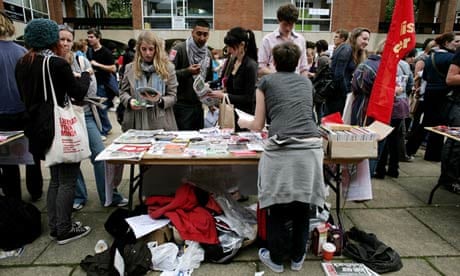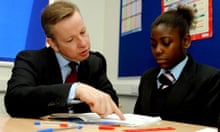The number of students in England entering higher education came close to touching the magic 50% mark – long seen as an objective by policymakers – in 2011-12, as students spurned gap years to avoid the imposition of higher tuition fees.
Statistics published by the Department for Business, Innovation and Skills show that 49.3% of young people in England entered higher education in the last academic year, the highest rate on record and just a shade below the 50% mark that successive governments have vowed to reach.
But the rise in numbers was artificially driven up by the decision of thousands of school-leavers to go straight on to higher or further education, rather than defer their entry by a year or more, in order to beat the increase in tuition fees from £3,290 to a maximum of £9,000 a year from 2012-13.
According to Ucas, the university entrance administrator, fewer than 10,000 students chose to defer a place in 2011-12, compared with the more than 23,000 who had done the same the previous academic year. In January, Ucas reported that the numbers choosing to defer in 2012-13 had returned to the earlier, higher levels.
In total, 342,000 students entered higher education for the first time in 2011-12, an increase of 17,000 compared with 2010-11, while the higher education initial participation rate (HEIPR) went up to 49% after three previous years when it had remained stuck at around 46%.
A wide chasm remains between male and female participation rates: in 2011-12, females made up 55% of initial entrants, compared with just 45% of males. That 10-percentage-point gap has persisted for several years.
The HEIPR measure – which counts 17-to-30-year-olds from England studying at UK institution for the first time – was used by the Labour government to judge progress towards its goal of a 50% participation rate. In 2006-07, the first year that HEIPR records were calculated, the rate was 42.5%.
Meanwhile, a new survey by the Institute of Education has found that the number of jobs in the UK requiring a degree has overtaken the number not requiring any qualifications. More than one in four jobs are now only available to those with degrees, the skills and employment survey found.






Comments (…)
Sign in or create your Guardian account to join the discussion